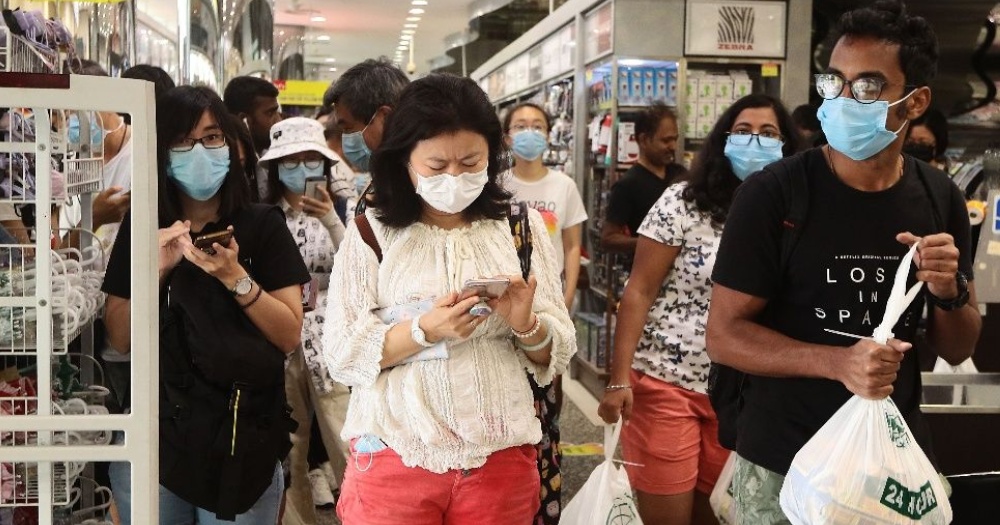On April 8, 2020, the Ministry of Health (MOH) announced 142 new cases of Covid-19 cases.
Of these, two were imported cases, 68 cases were linked to known clusters or other cases, while 72 are currently unlinked cases.
This marks the largest number of unlinked cases announced on a single day to date.
One third of local cases are currently unlinked
Two weeks ago, on March 25, MOH announced 73 new cases of Covid-19, with 38 imported cases, and 35 local transmissions.
Eight cases were unlinked.
A week ago, on April 1, 74 new cases of Covid-19 were announced, of which 20 were imported cases, while 54 were local cases with no recent travel history abroad.
Of these 54 cases, 25 cases were unlinked.
With 72 unlinked cases announced on April 8, it is apparent that the number of imported cases are on a downward trend, while there is a surge in the number of local unlinked cases.
As of April 7, there were 304 unlinked cases, out of a total 904 local cases, forming 32.9 per cent of total local cases.
 Via MOH's Situation Report.
Via MOH's Situation Report.
Second wave of Covid-19 involved returning Singaporeans
Around three weeks ago, on March 19, there were three times more imported cases as local cases announced, as the nation saw a surge in its residents returning from overseas.
As Singapore saw a spike in the number of imported cases, the government began introducing rigourous border control measures.
From March 24, all short-term visitors from anywhere in the world was barred from entering or transiting through Singapore.
Expanded SHN notices
Returning Singapore residents from the most affected areas were also sent to dedicated Stay-Home Notice (SHN) facilities to serve out their 14-day SHN, starting with returnees from the UK and U.S.
This was later expanded to Singapore residents returning from France, India, Switzerland, and ASEAN countries, taking effect from April 6.
On April 8, this was further expanded to include all returning Singapore residents, effective from April 10.
These were measures to deal with the the so-called "second wave" of Covid-19 cases, which comprised largely of returning Singapore residents.
There were only two imported cases reported on April 8.
Circuit breaker measures meant to deal with spike in local transmissions
As early as March 31, the co-chair of the Multi-Ministry Taskforce for Covid-19 Lawrence Wong said that the number of returnees to Singapore has tapered off, but he said that the locally transmitted cases were "particularly worrying".
Wong stated that safe distancing measures introduced by the government must be taken to heart by Singaporeans, or Singapore may see more local and unlinked cases popping up by the end of the month.
On April 3, Prime Minister Lee Hsien Loong addressed the nation to give an update on the Covid-19 situation, advising Singaporeans to stay at home as much as possible.
He announced that most workplaces and schools were to close, except for essential services and economic sectors, as part of the circuit breaker measures to deal with the increasing local transmissions of Covid-19.
Stay at home
Two days later, on April 5, Minister for Health Gan Kim Yong urged Singaporeans to take these latest precautions seriously, after 120 newly confirmed cases of Covid-19 was announced.
However, on the first day of the so-called circuit breaker month, more than 7,000 written advisories were issued members of the public who breached the enhanced safe distancing measures.
Most of these advisories were issued at hawker centres and markets.
Members of the public are strongly reminded to comply with the elevated safe distancing measures imposed from now to May 4, or risk a fine of up to S$10,000, imprisonment of up to six months, or both.
Top image by Suhaimi Abdullah/Getty Images
If you like what you read, follow us on Facebook, Instagram, Twitter and Telegram to get the latest updates.
